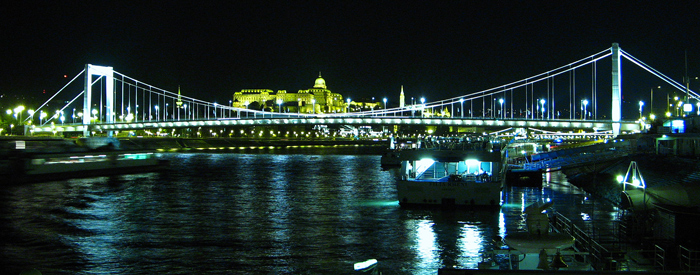Saturday
-
Our morning approach to Budapest was most entertaining. After breakfast, nearly everyone watched the scenery transition from countryside into suburbia and, eventually, evolve into the final destination of our cruise:
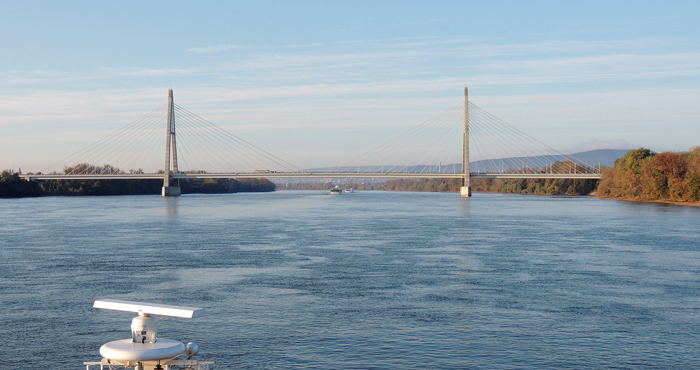
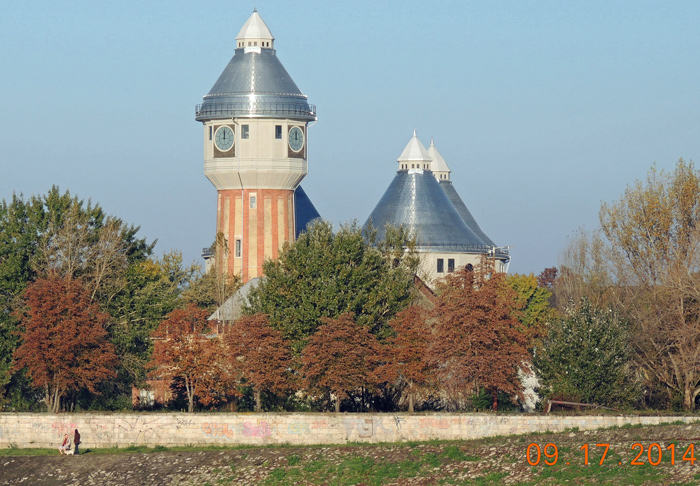
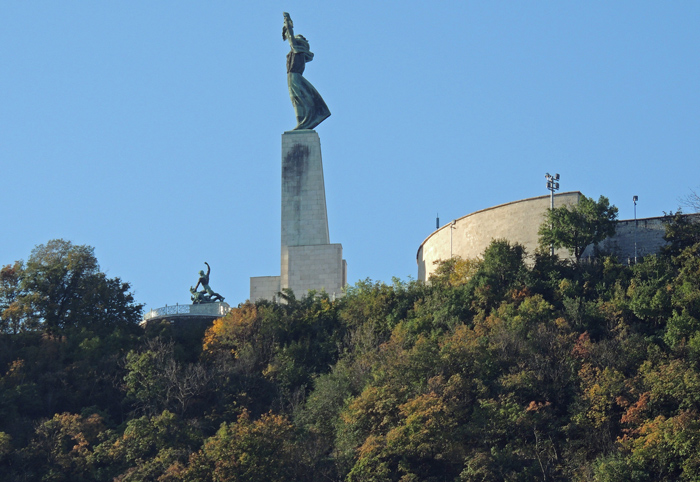
The Liberty Statue, above, on Gellért Hill is not far from where we docked. What it commemorates has changed with the times. When erected in 1947, it was called the “Liberation Monument” to honor Soviet soldiers who freed Hungary from the Nazis at the end of WWII. After the fall of Communism in 1989, it was subtly renamed the “Liberty Monument.” There is no love lost between Hungarians and their Soviet occupiers who overstayed their welcome by 45 years.
It is telling to compare the original inscription on the monument to its wording after the fall of Communism:
“To the memory of the liberating Soviet heroes [erected by] the grateful Hungarian people [in] 1945.” versus “To the memory of all those who sacrificed their lives for the independence, freedom, and prosperity of Hungary.”
Our organized tour began on Castle Hill on the Buda side of the Danube. There we explored the landmark Matthias Church, named after the king who initiated its construction in the 13th century:
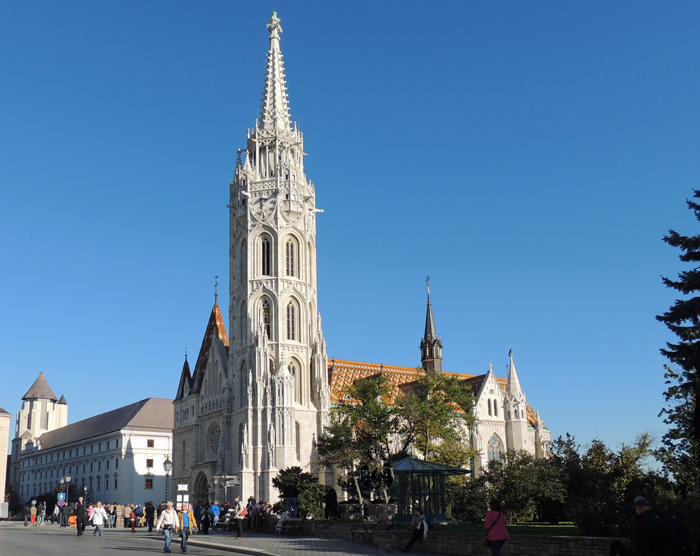
Its Gothic exterior and diamond roof tiles, however, date from 1896:
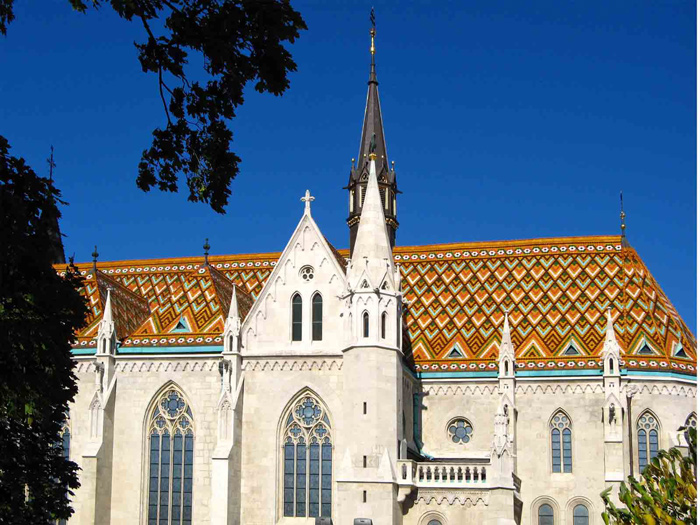
Perched on a spire, the raven (with a golden ring in its beak) is supposedly from King Matthias’ coat of arms:
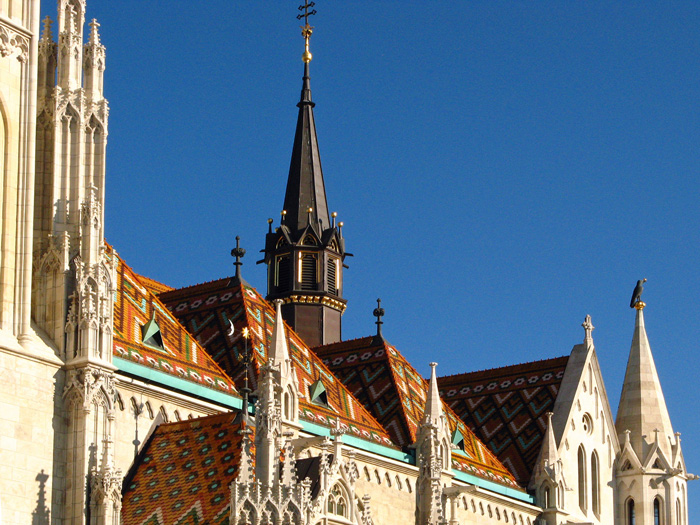
The interior is lavishly decorated, reflecting the thousand years of Hungarian history as well as the influence of the Turks and Hapsburgs:
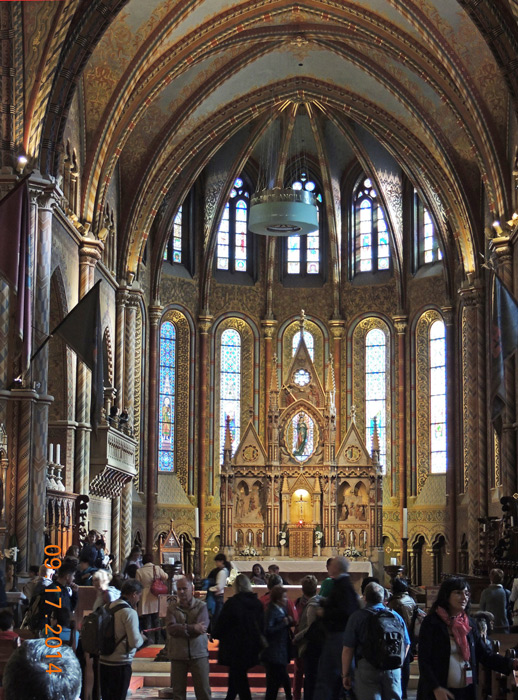
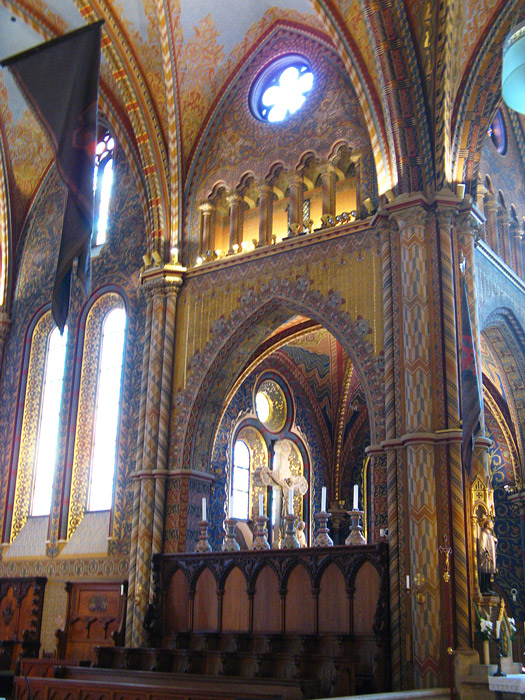
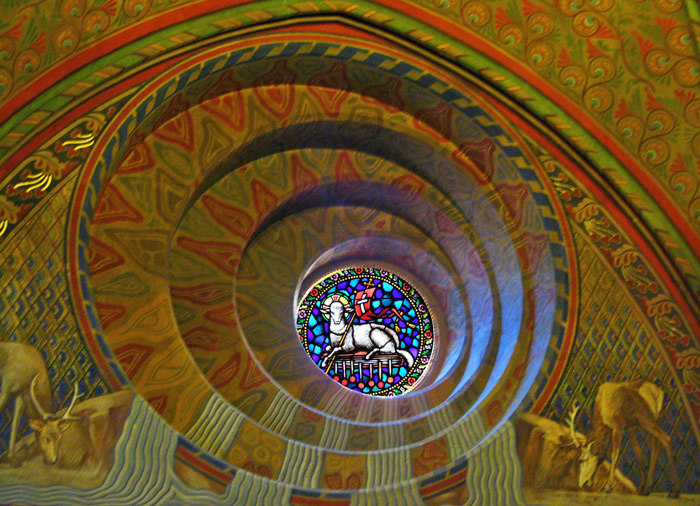
In the square fronting the church entrance is Trinity Column, a memorial to victims of the plague in 1691 and 1709:
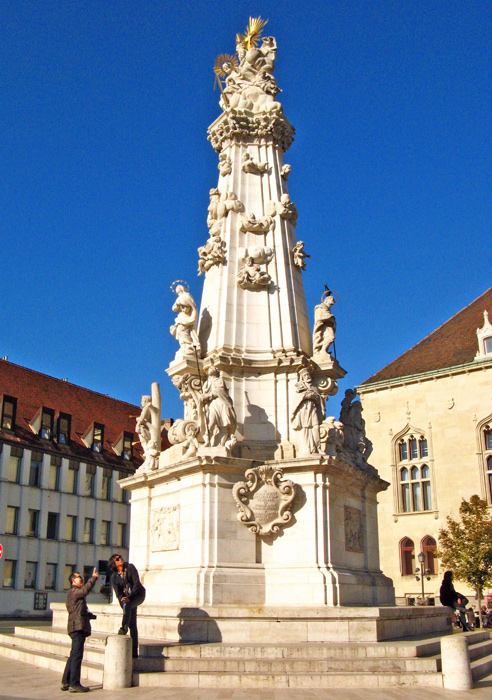
Its name stems from the artist’s depiction of the Trinity at the very top of the column.
Compared with Matthias Church, Fishermen’s Bastion is a new kid on the block. The Bastion was built on old fortress walls about 1900. It is so-named, the story goes, because, in the middle ages, the Fishermen’s Guild was responsible for defending this part of the castle wall:

There are seven towers, representing the seven chieftains who conquered this land for the Hungarians.
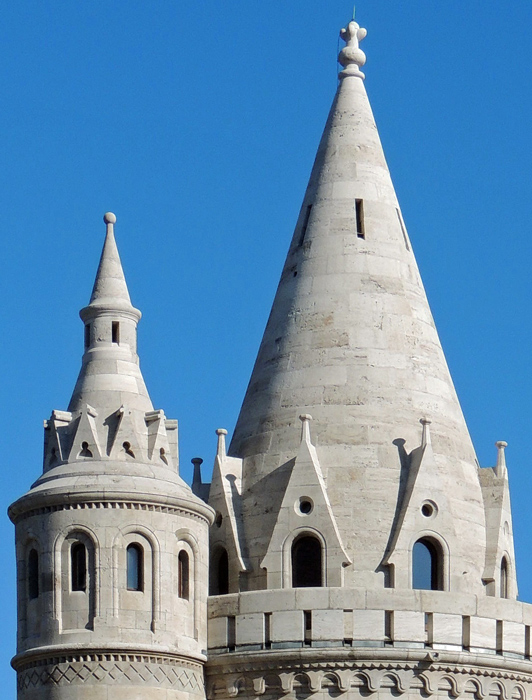
The odd building behind the Bastion in the view below is the Hilton Hotel, doing its best to blend into the background:
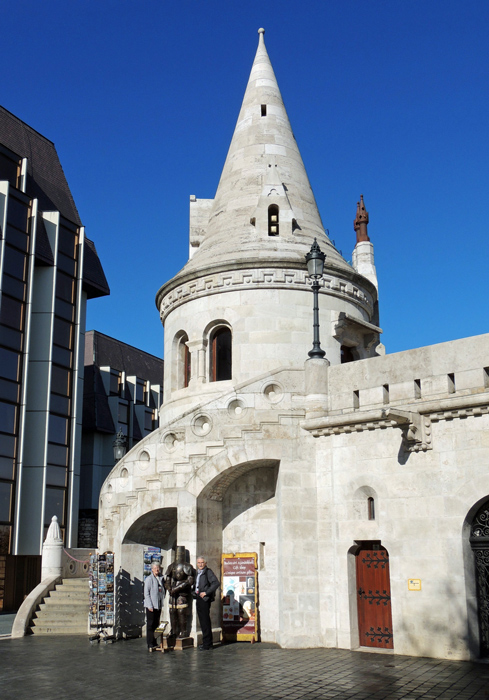
No surprise, the Bastion is a favored place for panoramic views and group photos ...
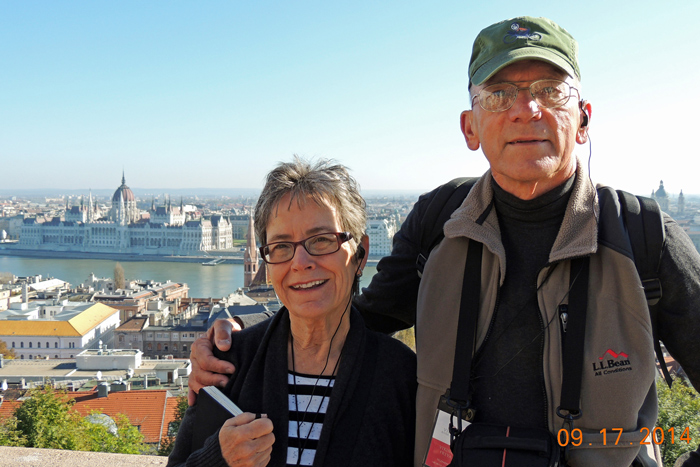
... so much so, that when taking a photo of four people, it can be challenging to get in the four who make up your group!
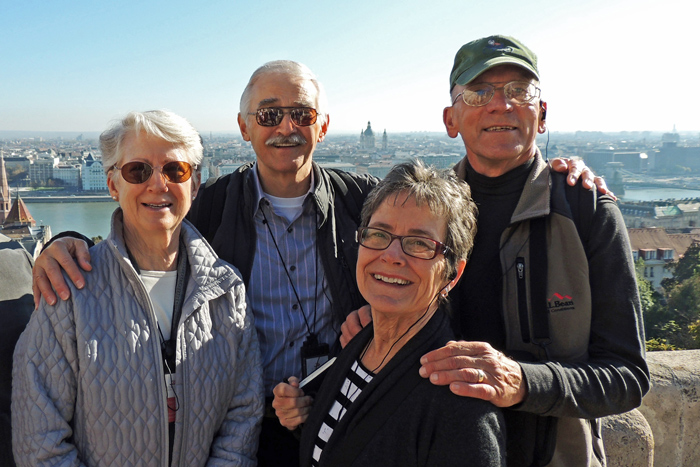
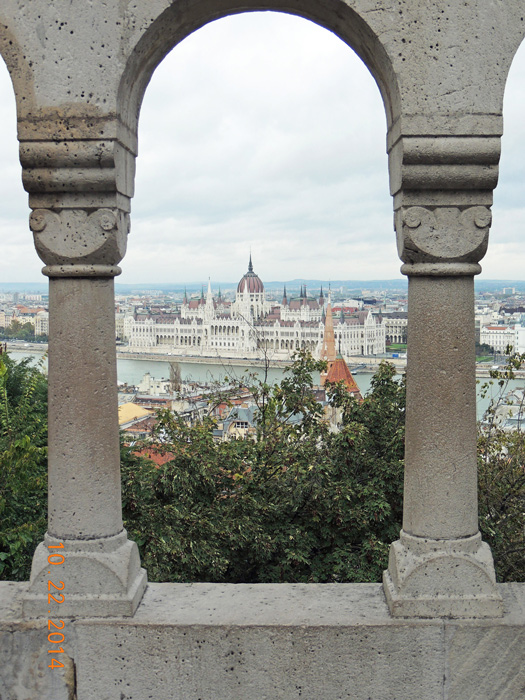
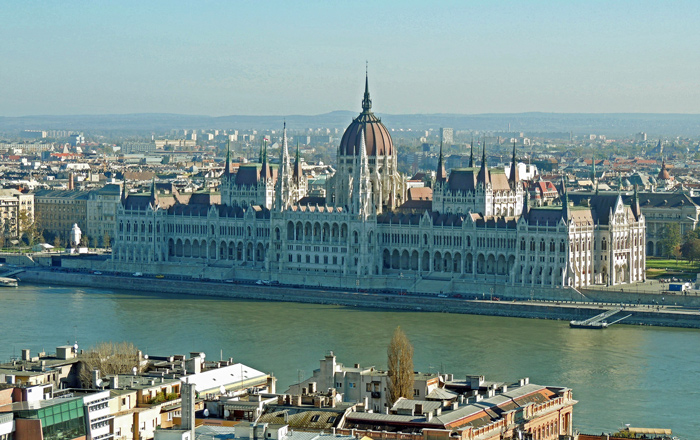
On the Pest side of the river, our coach traveled up impressive Andrássy Avenue, weaved through City Park and stopped at Heroes’ Square:
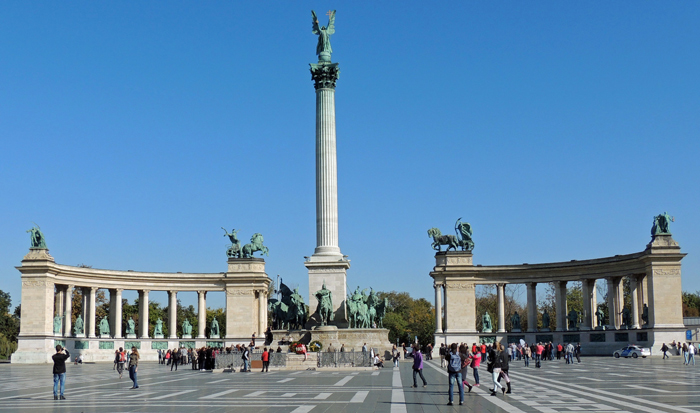
Here is located the Tomb of the Unknown Soldier and a statue complex featuring the Seven Chieftains of the Magyars and important national leaders. The monument was completed in 1900.
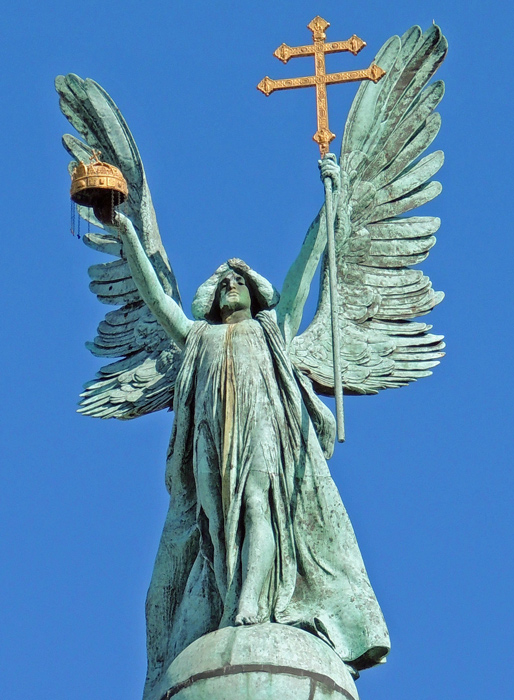
Towering over the Seven Chieftains is a portrayal of the archangel Gabriel. In his right hand, the angel lifts the crown of St. Stephen, the first king of Hungary. In his left hand, the angel holds a two barred cross, a symbol awarded to Stephen by the Pope for his efforts in converting Hungary to Christianity.
Our afternoon was low-key as we still had Sunday and Monday to wander about Budapest during our post-cruise extension. Window shopping on a nearby pedestrian street, enjoying our last dinner aboard the Freya, preparing our bags for pickup next morning and photographing the city from our ship’s top deck were about all we managed to get in:
